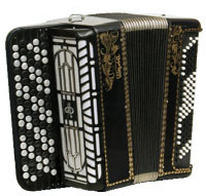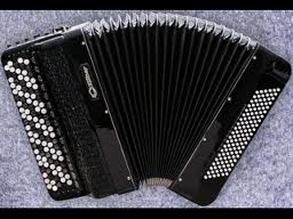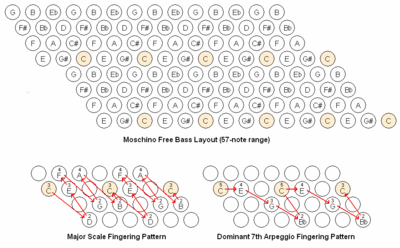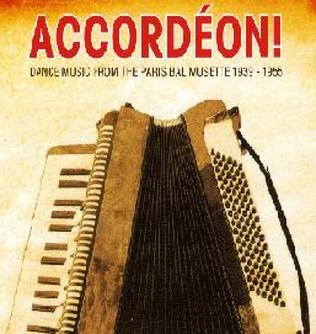Accordeon, bayan: info, history, composers, related instruments
Composers
It is difficult to devide the composers in groups, as actually they all are "world-composers" for the accordion. Yet it is even more difficult not to devide them, just to keep things clear. Therefor we decided to make a different group for the Russian composers, because of their special relationship to the accordion / bayan.
It is difficult to devide the composers in groups, as actually they all are "world-composers" for the accordion. Yet it is even more difficult not to devide them, just to keep things clear. Therefor we decided to make a different group for the Russian composers, because of their special relationship to the accordion / bayan.
Western composers:
Russian composers:
Alexander Technique
The technique is named after Frederick Matthias Alexander, who developed it in the years 1890 as a personal tool to alleviate breathing problems during public speaking. The Alexander technique teaches people to stop using levels of muscular and mental tention during their everyday activities. It is rather an educational process than a relaxation technique.
Musicians do some of the most complex and demanding physical movements of any profession. The term Repetitive Strain Injury (RSI) has become popular in use, but musicians always have to face the challenge of performing the same complex muscular actions over and over again. For musicians the Alexander technique has proven to improve the quality of the physical movements involved in playing an instrument. The technique makes a performance possible which is more lively and less tensed and rigid. Over the years the technique has been taught as part of the program at music schools and conservatories in New York, London, Toronto and many others.
To get more information about this technique, you can have a look at these sites:
http://www.alexandertechnique.com/musicians.htm
http://www.accordions.com/articles/jacomucci.aspx
http://www.youtube.com/watch?v=BgplXmILzoQ
Musicians do some of the most complex and demanding physical movements of any profession. The term Repetitive Strain Injury (RSI) has become popular in use, but musicians always have to face the challenge of performing the same complex muscular actions over and over again. For musicians the Alexander technique has proven to improve the quality of the physical movements involved in playing an instrument. The technique makes a performance possible which is more lively and less tensed and rigid. Over the years the technique has been taught as part of the program at music schools and conservatories in New York, London, Toronto and many others.
To get more information about this technique, you can have a look at these sites:
http://www.alexandertechnique.com/musicians.htm
http://www.accordions.com/articles/jacomucci.aspx
http://www.youtube.com/watch?v=BgplXmILzoQ
Ergonomic accordeons straps based on the Alexander technique
Click this link in order to find out more about a new kind of straps for the accordeon. These straps are very helpful for maintaining a good posture while playing: ergonomic accordeonstraps
How the accordeon is being built
In order to find out how an accordeon is made, it is interesting to look at the following clip
how the accordeon is built
how the accordeon is built
The accordeon

The accordeon (from the German word "akkord" - musical chord) is a box-shaped musical instrument of the free-reed aerophone family.
Free-reed means that sound is produced as air flows past a vibrating reed in a frame. In the case of the accordeon, the air-pressure is generated with the bellows.
Free-reed instruments appear to exist since early ages, allthough they only appeared in the west quite recently. The Chinese instrument, the sheng, is said to be the precursor of the accordeon. This instrument was brought to Saint-Petersburg, Russia, and some other European towns at the end of the 18th century. In this way the sheng was the inspiration for a series of inventions in the early 19th century: this was the start of the development of the modern free-reeds
sources: wikipedia: accordion, free-reeds
Free-reed means that sound is produced as air flows past a vibrating reed in a frame. In the case of the accordeon, the air-pressure is generated with the bellows.
Free-reed instruments appear to exist since early ages, allthough they only appeared in the west quite recently. The Chinese instrument, the sheng, is said to be the precursor of the accordeon. This instrument was brought to Saint-Petersburg, Russia, and some other European towns at the end of the 18th century. In this way the sheng was the inspiration for a series of inventions in the early 19th century: this was the start of the development of the modern free-reeds
sources: wikipedia: accordion, free-reeds
For certain, several persons contributed to the development of the accordeon, but it remains unknown who was the real inventor: some sources do mention F. L. Bushman, others say it was C. Wheatstone. The first chromatic three-row buttonaccordion was invented by the Russian musician Beloborodov in Tula. For more information it is interesting to have a look at who invented the harmonica and crosssound.com
For being able to place the accordion in the history of musical instruments, this is an interesting site: history of technology of musical instruments
For being able to place the accordion in the history of musical instruments, this is an interesting site: history of technology of musical instruments
|
Different from the western chromatic buttonaccordion is the Russian bayan. This instrument was developed in the early 20th century and named after the 11th century bard Boyan.
The difference is in some details of construction. So are the Russian reeds placed on big plates and there is no use of wax at all, this in contrast to the western instruments. Russian reeds generally are not tuned with tremolo. The registers can be changed with the chin and it is possible to switch from standard preset chords to free bass, individual bass notes. The difference in internal construction gives the bayan an almost perfect sound. Because of their range and pure sound, bayans are the instrument of choice for accordion-players to perform classical music. For more info see also: history of the classical free reed. Sources: www.nl.wikipedia.org, www.free-reed net |
|
picture edited by Mr. George Secor
|
The Moschino System
The moschino system is an unusual free bass system, that should not be overlooked. It was patented in 1962 by it's inventor Mario Moschino. We will try to explain the difference with the more familiar systems. On an accordeon with standard basses, also called the Stradella bass system, the columns of buttons are arranged in a circle of fifths. In this way the principal major chords of a key (I, IV and V) are placed in the three adjacent columns. Each columns contains, starting from the bellows and in this order: the major third, the root note, the major chord, the minor chord, the dominant seventh, the diminished seventh chord. On an accordeon with free basses, we do find the notes placed mirrored with the notes on the melody side. |
An accordeon that is equiped with the moschino system has eight rows of buttons at the bass side, the lowest notes being placed at the bottom of the instrument (in playing position). Every button represents a note, which means that all chords should be formed by hand, but the patterns are quite easy (as can be seen on the picture) and arpeggios can be executed smoothy, without leaping. Als the chromatic scale is easy to play as it requires no large leaps.
After Mr. George Secor, who is playing the moschino bass system, this method is extremely interesting when playing in a jazz style, in which he uses a lot of open - position chords in the left hand. He plays an accompaniment consisting of 4 - and 5 - note chords, which sometimes span over two octaves. In this case it is essential to use the 8 rows of buttons, Mr. George Secor says.
After Mr. George Secor, who is playing the moschino bass system, this method is extremely interesting when playing in a jazz style, in which he uses a lot of open - position chords in the left hand. He plays an accompaniment consisting of 4 - and 5 - note chords, which sometimes span over two octaves. In this case it is essential to use the 8 rows of buttons, Mr. George Secor says.
Popularity
|
In the West: after its invention, the accordion spread all over the world. The popularity of the instrument started in France, while immigrants brought their instrument to Paris and played in cafés and back rooms after they had finished their jobs and during week-ends. The most popular sound was musette and the most popular dance at that time the polka. As the accordion was used this way, it was seen as the instrument of the people. Only in very rare occasions the instrument was used in concerts for the aristocracy.
Starting from France, and also due to Italian influence, the accordion conquered England. From there it took the rest of the western world, wherever it was brought by immigrants. Among the people the accordion was an appreciated instrument because of its unique qualities: it played louder than other folk instruments, it was always ready to play and there was no other instrument needed. The accordion was a stand-alone instrument. The accordion lost popularity once the guitar, and more precisely the electrical guitar made its entry, together with rock & roll. Nowadays the accordion in regaining its popularity as popular music bands start using it again in their modern music. |
In Russia: it is generally accepted that the bayan is indissolubly linked with the Russian folkmusic. But we should not forget that the Russian folkmusic existed even before the bayan was invented. The bayan tradition, which started in the 19th century, was not a copy of the original folktune, but a deviation of its arrangement and style. The music was based on the themes of folkmusic, but was not traditional at all.
Certainly, there is a lot of Russian feeling in the bayan. This is its homeland, but its place in Russian culture is only one century old. Just as in the west, the bayan does not have particullary deep roots in Russian culture. But, as Russia is the homeland of the bayan, it is to be accepted as normal that most composers for bayanmusic are of Russian origin.
Source: Russiapedia
Certainly, there is a lot of Russian feeling in the bayan. This is its homeland, but its place in Russian culture is only one century old. Just as in the west, the bayan does not have particullary deep roots in Russian culture. But, as Russia is the homeland of the bayan, it is to be accepted as normal that most composers for bayanmusic are of Russian origin.
Source: Russiapedia
Accordeon-related instruments
On the site www.korbo.com you can find more information on the layout and sounds of different types of accordeons.
If you do want to find out more about accordeon-related instruments, click the following links:
If you do want to find out more about accordeon-related instruments, click the following links:
This link provides a small visit to the accordeon museum of Helmi Harrington: https://www.youtube.com/watch?v=Z_GC9fSDXAI



